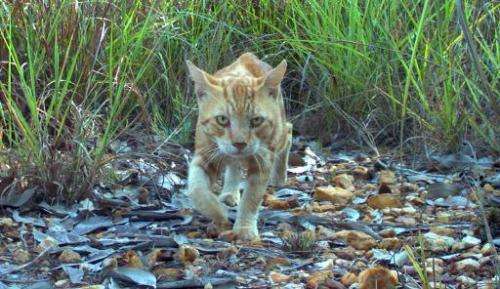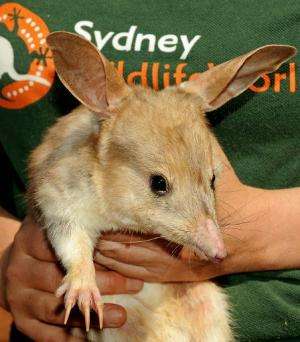Australia aims to end extinction of native wildlife by 2020

Australia's Environment Minister Greg Hunt has pledged to end the extinction of native mammal species by 2020, with a focus on culprits such as feral cats.
Hunt said Australia had the worst rate of mammal loss in the world and the nation's "greatest failure" in environmental policy was protecting threatened species.
"Our flora and fauna are part of what makes us Australian," he said in a speech late Wednesday.
"I don't want the extinction of species such as the numbat, the quokka, the bilby, on our collective consciences," he said, referring to mammals that are little-known outside Australia compared to other marsupials like the kangaroo.
Hunt said the government had been putting in place a "different approach" to halting the extinction of native wildlife, including the appointment of a Threatened Species Commissioner to spearhead the efforts.
Australia has some 749 species of plants, mammals, birds, frogs, fish, reptiles and other animals listed as threatened under the Environment Protection and Biodiversity Conservation Act, with the numbers rising each year, Hunt said.
Over the past two decades, 53 land-based species moved to a higher threat category, but only 15 moved lower.
A study released earlier this year showed Australia's mammal extinction rate was the highest in the world, with more than 10 percent of species wiped out since Europeans settled the country two centuries ago.

Feral cats were identified as the main culprit, although feral foxes were also responsible. Other factors contributing to the extinctions include climate change, fire and habitat destruction.
Australian states and territories have separate threatened species lists and are "struggling with similar problems", Hunt said, adding that legislation is failing to arrest the declines.
"I have set a goal of ending the loss of mammal species by 2020. What's more, I want to see improvements in at least 20 of those species between now and then," he said.
The measures would focus on major threats such as those posed by feral cats, which number between 10 to 20 million across Australia and kill countless native animals every night.
Cats were first introduced to Australia by British immigrants in the late 1700s as domestic pets, but went wild and spread across the continent over the next 100 years.
One measure under consideration is the development of a "new, humane bait" called Curiosity, which Hunt described as a "potential game-changer".
Apart from tackling the feral-cat threat, Hunt said the government was committing Aus$3.3 million (US$2.9 million) to the recovery of the endangered Tasmanian devil.
A "Green Army" which plans to recruit up to 15,000 young people was announced by the government in August and will be involved in restoring koala habitats, managing pest animals and monitoring threatened species.
© 2014 AFP




















